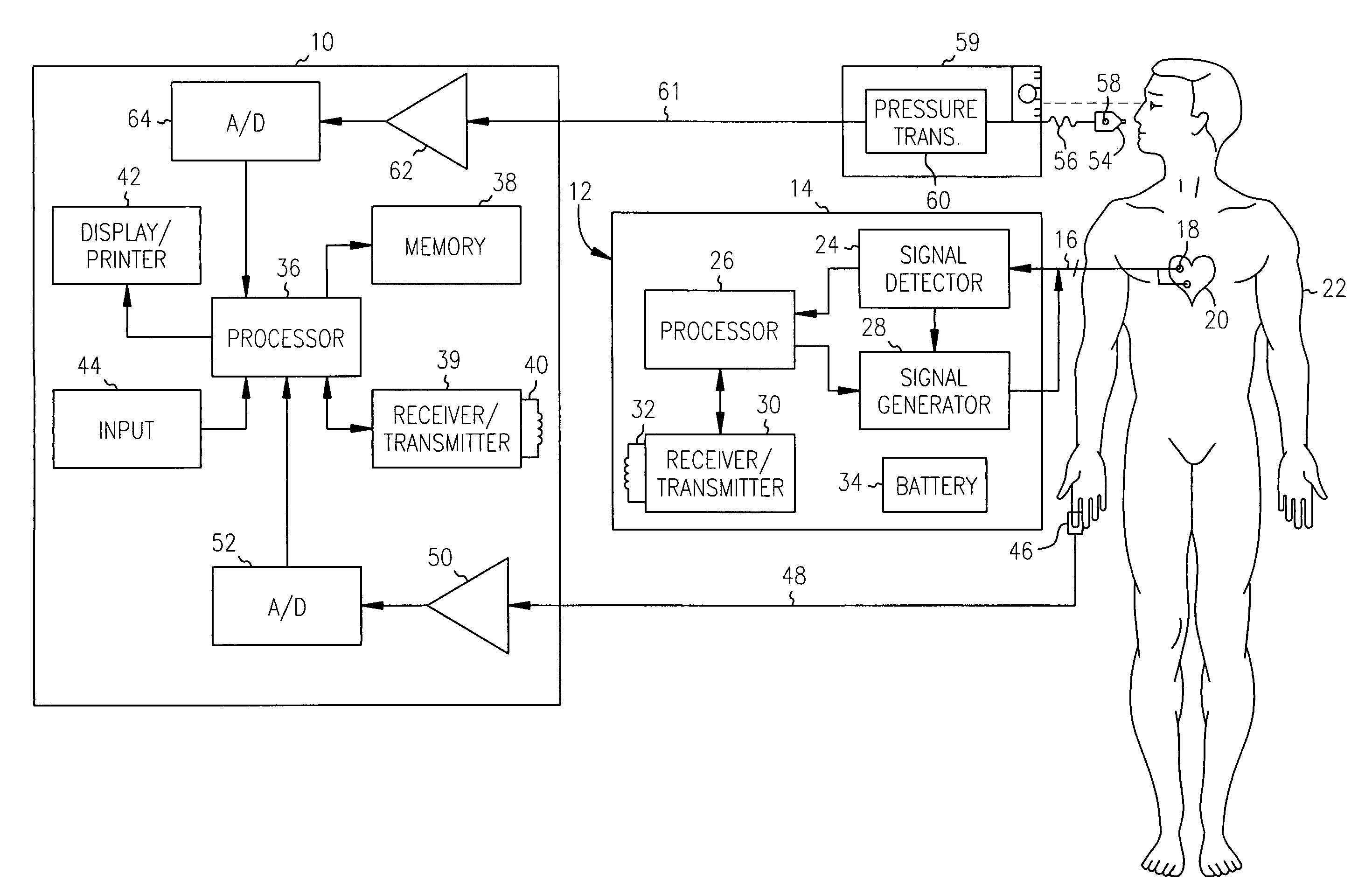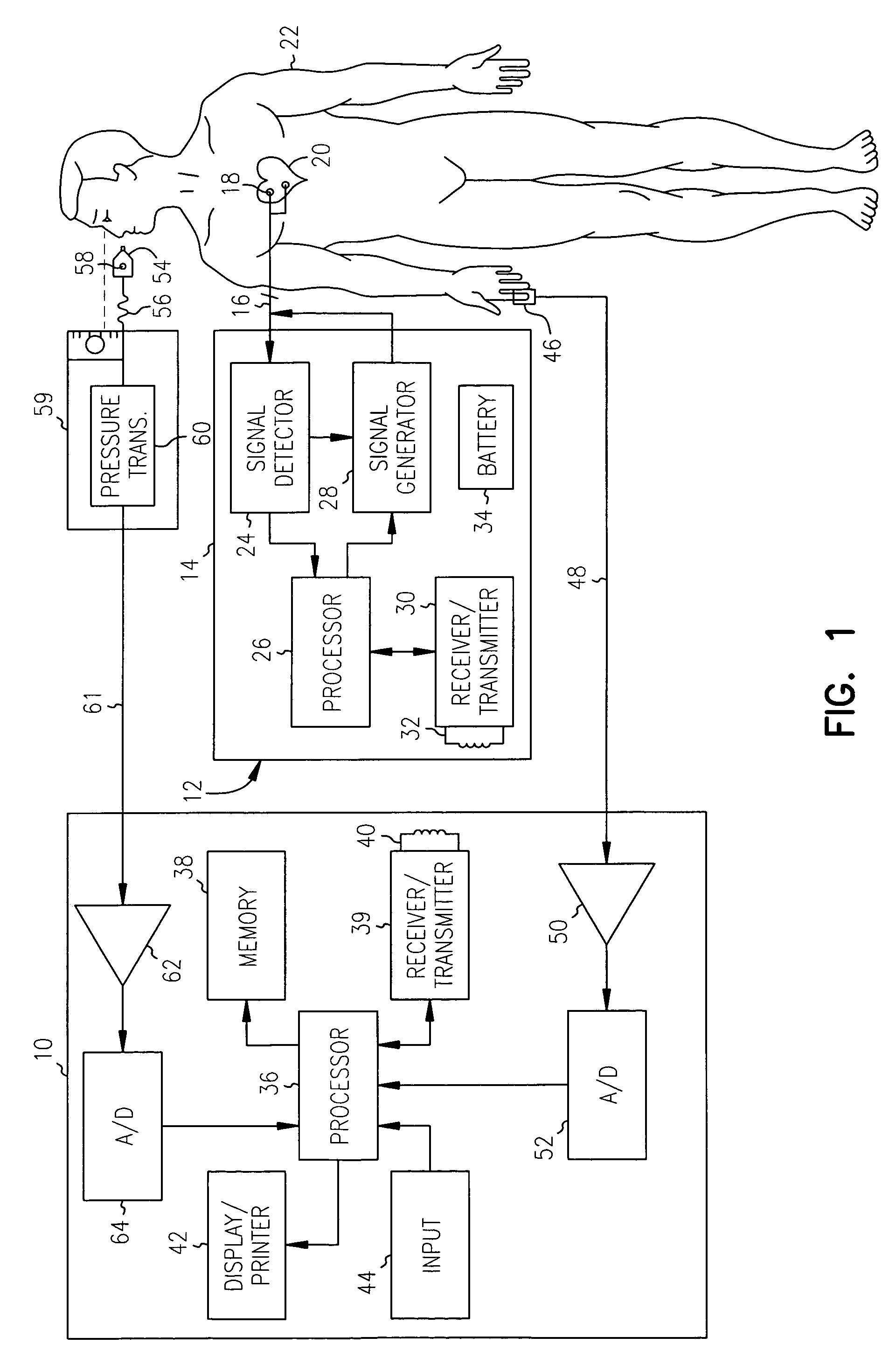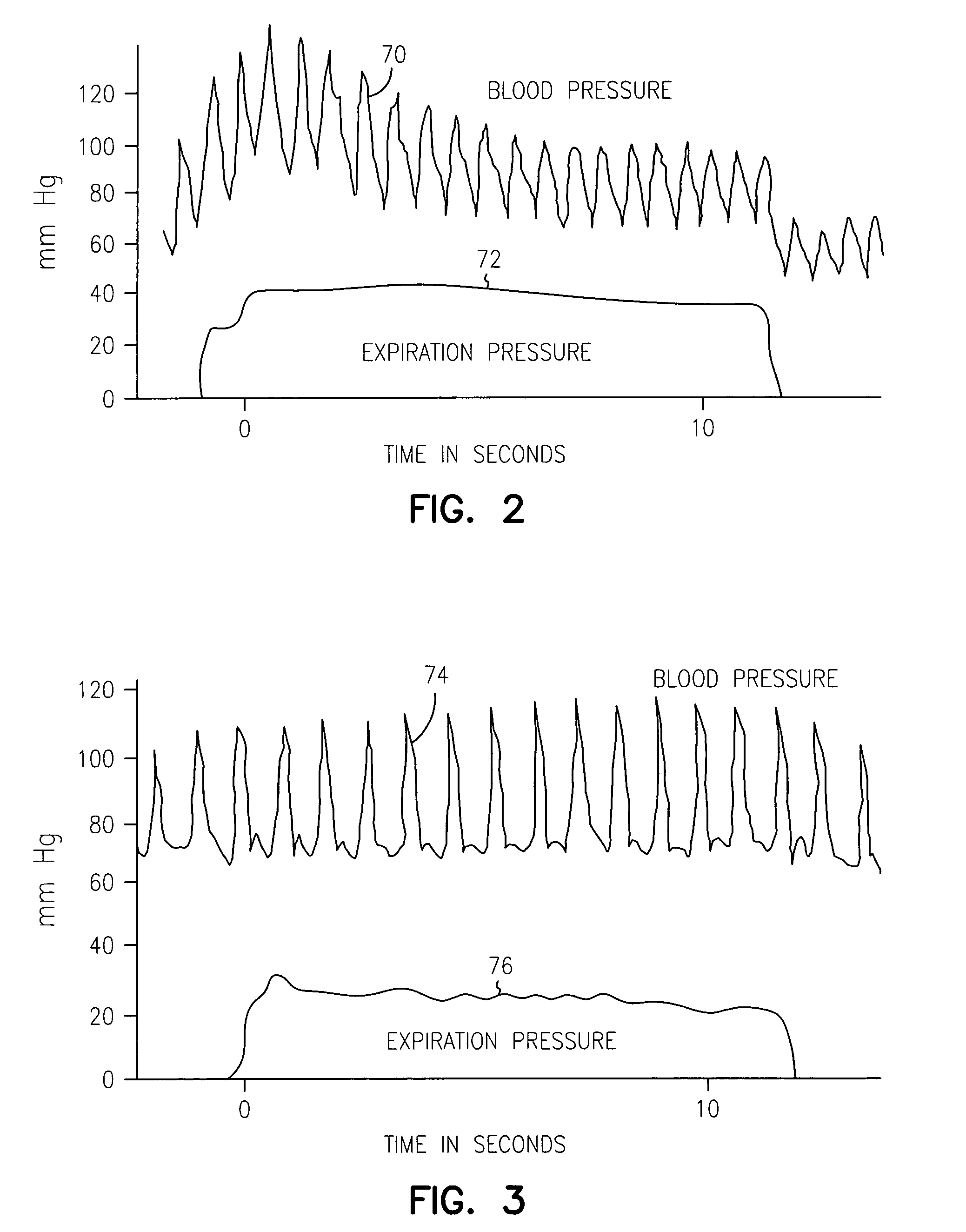Non-invasive method and apparatus for cardiac pacemaker pacing parameter optimization and monitoring of cardiac dysfunction
a pacemaker and parameter optimization technology, applied in the field of medical devices, can solve the problems of inability to guarantee the optimal benefit of left ventricular or biventricular pacing in congestive heart failure patients, and may not achieve the optimal benefit, or even any benefit at all, and achieve the effect of eliminating or reducing pulsus alternans, uniform peak amplitude, and better detection and characterization of deterioration
- Summary
- Abstract
- Description
- Claims
- Application Information
AI Technical Summary
Benefits of technology
Problems solved by technology
Method used
Image
Examples
Embodiment Construction
[0026]An exemplary system in accordance with the present invention for monitoring cardiac disease progression and for optimizing the pacing parameters of an implanted pacing device using cardiac performance information obtained from a noninvasive sensor is illustrated in, and will be described in detail with reference to, FIG. 1. A system in accordance with the present invention is preferably embodied in an external programmer device 10. The external programmer device 10 is employed to monitor cardiac disease progression and / or to program the operating parameters of an implantable cardiac device 12.
[0027]The implantable cardiac device 12 includes a hermetically sealed canister 14 which encloses circuitry for detecting and analyzing cardiac electrical conduction defects and arrhythmias and for providing therapy therefore. The circuitry within the canister 14 is connected via one or more leads 16 to one or more electrodes 18 which are implanted in or near the chambers of a patient's h...
PUM
 Login to View More
Login to View More Abstract
Description
Claims
Application Information
 Login to View More
Login to View More - R&D
- Intellectual Property
- Life Sciences
- Materials
- Tech Scout
- Unparalleled Data Quality
- Higher Quality Content
- 60% Fewer Hallucinations
Browse by: Latest US Patents, China's latest patents, Technical Efficacy Thesaurus, Application Domain, Technology Topic, Popular Technical Reports.
© 2025 PatSnap. All rights reserved.Legal|Privacy policy|Modern Slavery Act Transparency Statement|Sitemap|About US| Contact US: help@patsnap.com



